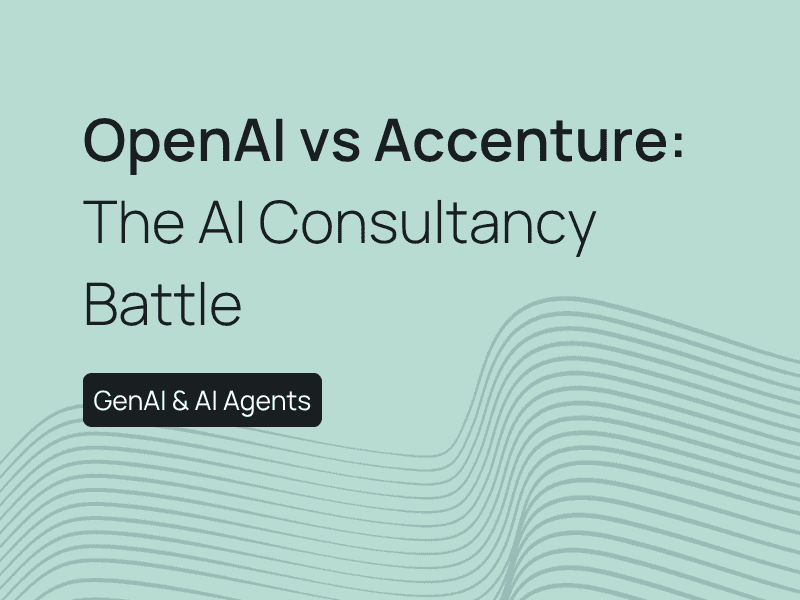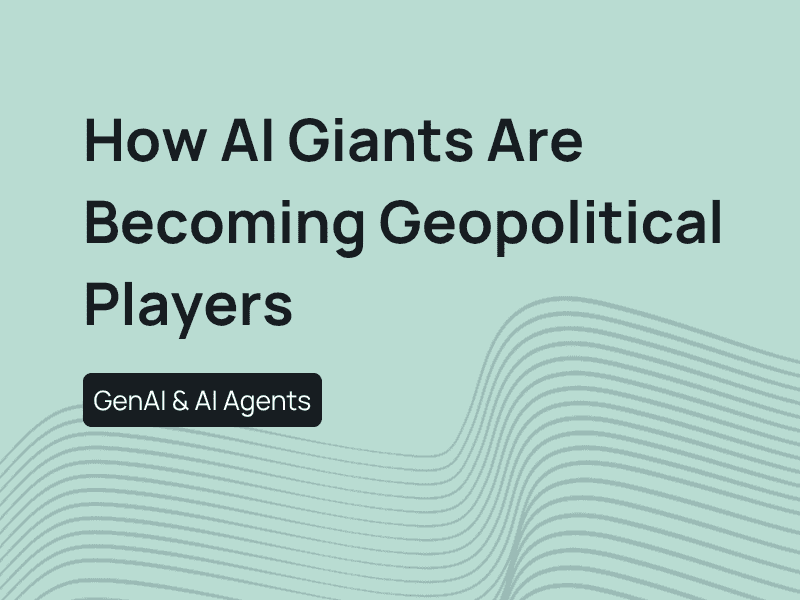Agentic AI is different from traditional AI and automation because it can make decisions and act on its own to achieve specific goals. Unlike traditional AI, Agentic AI can adapt, learn from experience, and change its approach based on the situation, without needing constant guidance from humans. While automation handles repetitive tasks based on a clear set of rules, Agentic AI is more flexible and can take on complex, dynamic challenges by setting its own objectives and adjusting its actions accordingly. Let’s have a closer look.
The rise of autonomous AI systems
In short, agentic AI is an advanced form of artificial intelligence capable of autonomous decision-making, action and continuous learning from interactions with minimal human supervision. Unlike traditional AI models, agentic AI demonstrates autonomy, goal-oriented behavior, adaptability and advanced reasoning capabilities.
Agentic AI can operate independently, initiating and completing tasks without constant human supervision. It can process vast amounts of data, identify patterns, and work towards assigned objectives on its own.
While traditional AI focuses on recognizing patterns, agentic AI works toward specific objectives by planning and carrying out multi-step tasks. It can interpret complex goals and develop strategies to achieve them.
Agentic AI learns from experiences and adjusts its behavior in real-time. It can self-improve and optimize workflows dynamically, unlike traditional AI which requires retraining to improve performance.
Agentic AI can connect to multiple systems, coordinate across different tools and databases, and autonomously manage complex workflows. It uses sophisticated decision-making based on context and trade-offs.
Differences from traditional AI
Whereas traditional AI is designed for specific tasks based on predefined rules or training data, agentic AI goes beyond passive responses by planning, adapting and making decisions in real time. Traditional AI models operate within predefined constraints and require human intervention, while agentic AI can manage complex, multi-stage processes with dynamically defined goals.
For example, in customer care, a traditional AI might process requests using a fixed script. However, an agentic AI system could adapt its responses according to the customer's tone, past interactions or even the time of day.
How Agentic AI works
Agentic AI employs a sophisticated decision-making framework that involves four key stages: perception, planning, execution, and feedback. The perception stage involves gathering and processing information from the environment using sensors, data inputs, or other sources. Based on this information, the AI develops strategies to achieve its goals during the planning stage, considering multiple possible outcomes. The AI then implements its chosen plan of action during the execution stage, interacting with its environment or performing specific tasks. Finally, the system evaluates the results of its actions during the feedback stage, learning from the outcomes to improve future decision-making.
This framework allows Agentic AI to operate in dynamic environments, continuously adapting its behavior based on new information and experiences. Reinforcement learning serves as the backbone of Agentic AI's ability to learn and improve through experience. AI agents learn optimal behaviors by interacting with their environment and receiving feedback in the form of rewards or penalties.
Investment potential in Agentic AI
Strategic industries
Healthcare - We're seeing improvements in diagnostic support, with AI-assisted diagnoses achieving accuracy rates up to 95% for specific medical conditions. Patient care coordination has also improved, with treatment delays reduced by 30% and patient satisfaction scores increased by 25%. Agentic AI is also revolutionizing drug discovery by analyzing vast amounts of clinical and genetic data, significantly shortening the timeline for developing life-saving drugs.
Manufacturing - Agentic AI enables predictive maintenance by monitoring equipment and predicting when maintenance is needed, which helps reduce downtime and optimize production. AI also supports smart factory management, where autonomous systems handle and improve various factory operations. Predictive maintenance is another area where Agentic AI is making a significant impact. By analyzing performance data, these systems can forecast maintenance needs, potentially reducing unplanned downtime by up to 50%.
Logistics & transportation - Agentic AI allows route optimization by analyzing real-time data to adjust delivery routes and schedules based on traffic conditions and shipment priorities. AI also automates inventory management, optimizing supply chain operations to prevent shortages or overstocking. It also powers autonomous vehicles, such as self-driving cars and delivery robots, allowing them to make real-time decisions and adjust their routes independently.
Finance - Agentic AI is making big changes in the financial sector. It allows for autonomous trading, where AI systems quickly analyze market data and make trades, changing the way trading strategies work. In fraud detection, AI can spot fraudulent activities by looking for unusual patterns in transactions. AI also helps provide personalized financial services by offering advice and recommendations based on individual customer data. On top of that, it improves risk assessment by evaluating credit risks and making investment decisions, adjusting strategies based on real-time events.
Challenges & Risks
Technical challenges
Verifying and validating autonomous systems remains a major hurdle, as existing safety models struggle to predict their behavior in complex environments. Security is another concern—these systems are vulnerable to cyberattacks and manipulation, which can have serious consequences in critical areas. Additionally, interactions between multiple AI systems, especially in fields like finance or national defense, can lead to unpredictable and rapidly escalating effects.
Ethical challenges
Algorithmic bias is a major issue, as AI trained on biased data can produce unfair or discriminatory outcomes, creating ethical and reputational risks. A lack of transparency also raises concerns—many AI models function as "black boxes," making it difficult to audit or understand their decision-making, which is particularly risky in high-stakes applications. Ensuring AI’s goals align with human values and interests remains an ongoing challenge.
Regulatory concerns
Determining liability for accidents or failures is difficult, particularly for autonomous systems like self-driving cars. Data privacy is another major issue, with laws such as GDPR and CCPA requiring strict compliance. Meanwhile, regulations struggle to keep pace with AI’s rapid advancements, underscoring the need for flexible, outcome-driven policies.
Human factors
Trust and reliability are critical for AI adoption, yet over-reliance on these systems can reduce human oversight and create vulnerabilities. The cognitive demands on human supervisors must also be managed to prevent burnout and errors. Finally, intuitive user interfaces that facilitate clear communication between humans and AI are essential for effective collaboration.
Looking ahead
We believe Agentic AI is set to critically improve decision-making and automation across various industries - allow for more efficient and accurate real-time decisions, creating new opportunities in many key fields. We envision one of the key benefits of agentic AI to be its ability to learn and adapt in real time. This characteristic will transform markets by making business strategies more responsive and agile.
Looking ahead, we anticipate that the rise of agentic AI will also stimulate the development of new products and services. We expect to see the emergence of more advanced AI-powered virtual assistants, autonomous systems such as self-driving vehicles and drones, as well as AI-driven research and development tools that will accelerate innovation in various sectors.
Published by Samuel Hieber


